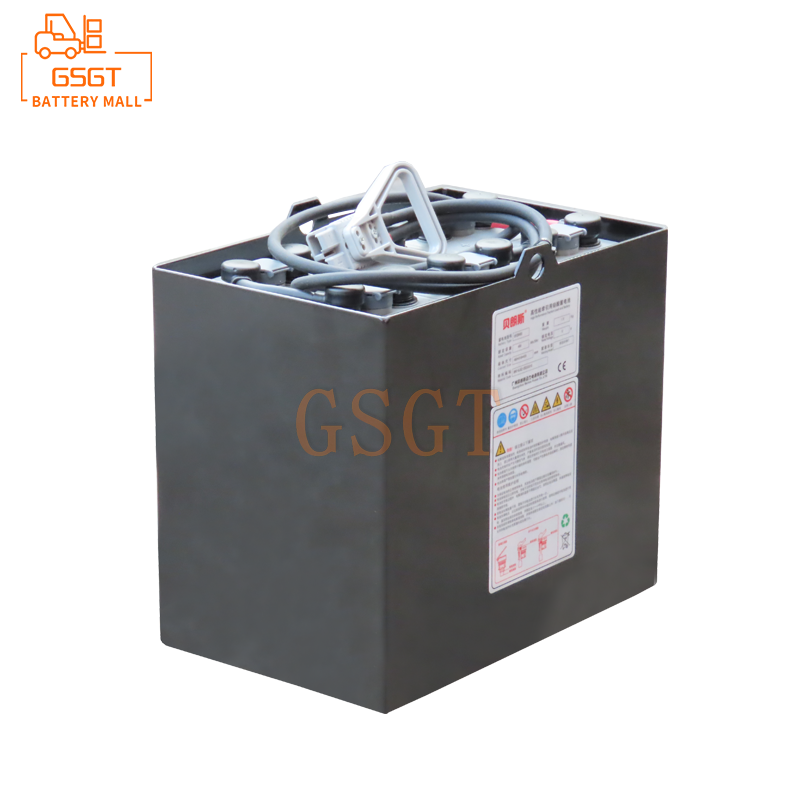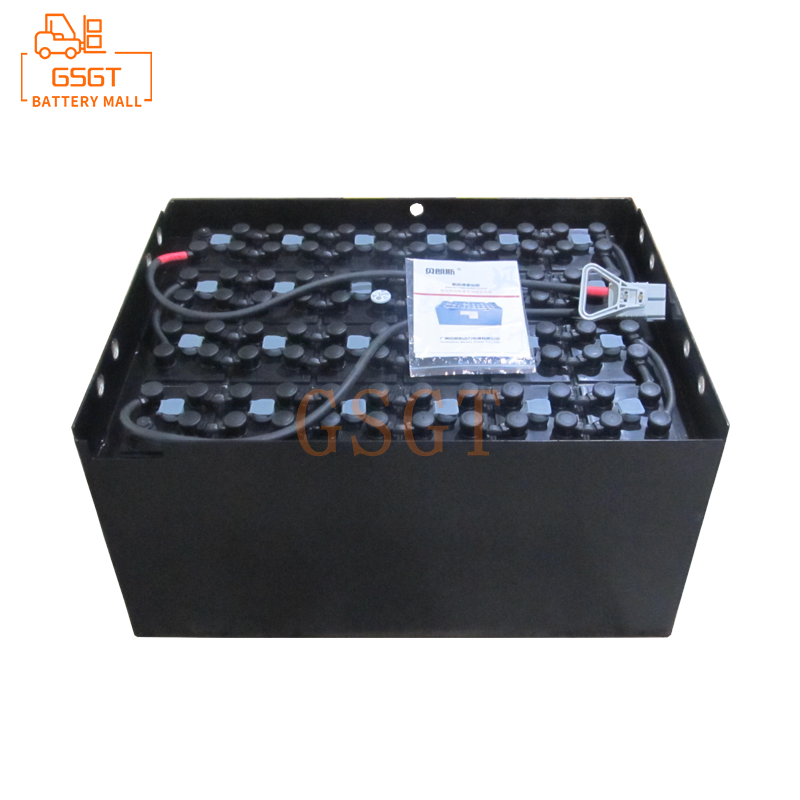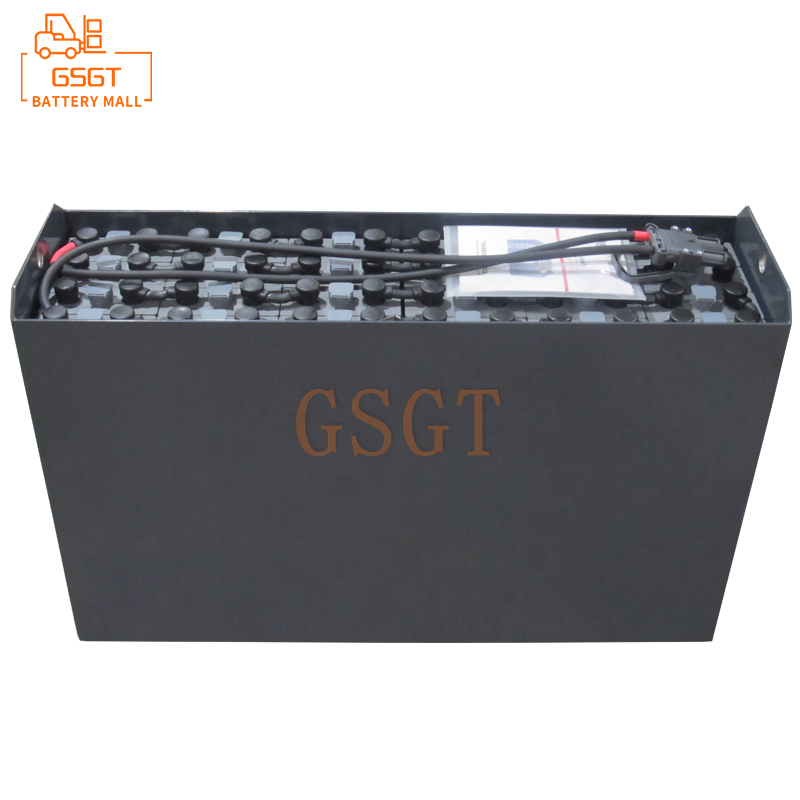Time:2025-06-05 12:03:41
Browse:608
In the industrial field, as an important handling equipment, the performance of lead-acid batteries, one of the power sources of forklifts, is of vital importance. However, the bulging of lead-acid batteries occurs from time to time, which not only affects the normal use of forklifts but also may bring safety hazards. Meanwhile, some misunderstandings that exist during the use of forklifts have also indirectly exacerbated the problem of lead-acid battery bulging. A thorough understanding of the reasons for the bulging of lead-acid batteries and the misunderstandings in the use of forklifts, and taking corresponding solutions, is of great significance for ensuring the efficient operation of forklifts and extending the service life of lead-acid batteries.
Analysis of the Causes of Lead-acid Battery Bulging
Charging factor
Overcharging leads to gas accumulation: When float charging a lead-acid battery, if the voltage is set too high, it will cause the rate of oxygen release on the positive plate to accelerate. Under normal circumstances, the oxygen that is released should undergo a recombination reaction with the negative electrode. However, excessive voltage causes this process to be unbalanced, and a large amount of oxygen cannot combine with the negative electrode in time, thus accumulating inside the battery. As the amount of gas keeps increasing, the internal pressure of the battery gradually rises. When the pressure exceeds the limit that the battery casing can withstand, bulging and deformation will occur. For instance, in some forklift charging scenarios, if the voltage regulation of the charging equipment deviates and the battery is charged at an excessively high voltage for a long time, after a period of time, the problem of battery swelling will be clearly observed.
Excessive charging time: Many users, when charging the lead-acid batteries of forklifts, tend to extend the charging time at will, such as often charging throughout the night. During the charging process of lead-acid batteries, the charging current gradually decreases over time. When it reaches a certain level, if the battery is charged for a long time, a water decomposition reaction will occur inside the battery, generating hydrogen and oxygen. If too much gas cannot be discharged in time, it will cause the internal pressure of the battery to rise, eventually leading to battery swelling. Studies show that overcharging for more than 2 to 3 hours beyond the normal charging time significantly increases the risk of battery swelling.
Charger failure: Low-quality chargers or those that malfunction after long-term use cannot precisely control the charging voltage and current when charging lead-acid batteries. For instance, some chargers do not turn on the lights when the battery is fully charged and cannot automatically stop charging. Instead, they continuously charge the battery with a relatively large current, keeping the battery in an overcharged state all the time. Some chargers have unstable charging currents due to issues such as aging components and desoldering. These situations can all cause damage to the battery and lead to bulging.
Battery itself factors
Battery aging: As the usage time increases, the internal components of lead-acid batteries, such as plates and electrolyte, will gradually age. The active substances on the plates will gradually fall off, and the performance of the electrolyte will also decline, resulting in an increase in the internal resistance of the battery and a deterioration in its charging acceptance capacity. In this case, the battery is more likely to generate heat during the charging process, with an increase in the amount of internal gas produced and a decrease in the gas discharge efficiency, which leads to an increase in the internal pressure of the battery and causes it to bulge. Generally speaking, the normal service life of lead-acid batteries is 2 to 3 years. Beyond this period, the probability of battery aging causing bulging will increase significantly.
Manufacturing defects: During the battery production process, if there are quality issues such as uneven separator thickness, insufficient electrolyte volume or non-compliance with purity standards, it will affect the chemical reactions inside the battery. For instance, uneven thickness of the diaphragm may lead to local short circuits, causing excessive current in that area and generating too much heat and gas. If the amount of electrolyte is insufficient, it cannot fully participate in chemical reactions, affecting battery performance. At the same time, it will also cause heat accumulation inside the battery, increasing the risk of bulging. Although battery bulges caused by manufacturing defects account for a relatively small proportion of the overall cases, once they occur, they often cause serious damage to the battery.
Environmental factors
High-temperature impact: When forklifts operate or charge in high-temperature environments, the performance of lead-acid batteries will be significantly affected. When the ambient temperature is too high, the chemical reaction rate inside the battery increases, and the heat generated during charging is difficult to dissipate, causing the battery temperature to rise further. High temperatures will accelerate the evaporation of water in the electrolyte, causing the battery to lose water. At the same time, it will also increase the generation of gas inside the battery. In addition, high temperatures will also reduce the strength of the battery casing material, making it more prone to bulging and deformation when the internal pressure increases. During the high-temperature period of summer, the incidence of lead-acid battery bulging in forklifts is significantly higher than that in other seasons.
Vibration and impact: During the daily operation of forklifts, various vibrations and impacts are inevitable. Frequent vibration and impact may cause the plates, connecting plates and other components inside the battery to loosen or damage, leading to short circuits or poor contact within the battery. Short circuits can cause the battery to generate a large amount of heat and gas instantaneously, while poor contact will affect the battery's charging and discharging performance, making it more prone to overheating and bulging during the charging and discharging process.
Misunderstandings in the use of forklifts
Neglect battery maintenance
Failure to regularly check the electrolyte: During the use of lead-acid batteries, the electrolyte will gradually decrease due to chemical reactions and water evaporation. However, many forklift users overlook the importance of regularly checking the electrolyte level. If the electrolyte level is too low, the plates will be partially exposed to the air, causing sulfation of the plates, which affects the charging and discharging performance of the battery. At the same time, it will also make the battery more prone to heating during the charging process, increasing the risk of bulging. It is generally recommended to check the electrolyte level every 1 to 2 weeks and add distilled water or dedicated electrolyte replenishment solution in a timely manner.
Failure to perform equalization charging: For forklift battery packs composed of multiple lead-acid batteries, due to the differences in performance and usage conditions among each battery, an imbalance in battery voltage may occur after long-term use. If equalization charging is not carried out in time, batteries with lower voltages will be over-discharged, while those with higher voltages may be overcharged. Both of these will accelerate battery damage and lead to problems such as bulging. Regular equalization charging can make the voltages of each battery in the battery pack tend to be consistent, thereby extending the battery's service life. However, in actual operation, many users do not perform equalization charging on the battery pack according to the prescribed cycle.
Incorrect operation habits
Frequent sudden acceleration and braking: During the operation of a forklift, if the driver frequently performs sudden acceleration and braking, the lead-acid battery will be subjected to a relatively large current impact instantaneously. When accelerating rapidly, the battery needs to output a large current to drive the forklift to start quickly, which will cause the active substances on the internal plates of the battery to react rapidly, generating a large amount of heat and gas. When the forklift brakes suddenly, its kinetic energy is recovered through the battery, which will cause an excessive instantaneous charging current to the battery and also cause damage to the battery. When exposed to such frequent high-current impacts for a long time, the internal structure of the battery is prone to damage, which in turn leads to bulging. According to research, frequent sudden acceleration and sudden braking can shorten the battery's service life by 20% to 30%.
Long-term high-load operation: Some forklift users, in pursuit of work efficiency, keep their forklifts in a high-load operation state for a long time, that is, transporting overweight goods for a long time or operating under harsh working conditions. In this case, lead-acid batteries need to continuously output a large current, intensifying the chemical reactions inside the battery and generating a significant increase in heat and gas. At the same time, high-load operation will cause the battery temperature to rise rapidly, further deteriorating the working environment of the battery, accelerating its aging and damage, and increasing the possibility of bulging.
Mixed chargers: Different models and specifications of forklift lead-acid batteries have different charging requirements (such as charging voltage, current, etc.). However, some users, for the sake of convenience, will mix different chargers when charging. For example, charging a large-capacity battery with a charger suitable for small-capacity batteries may result in an excessively long charging time and failure to fully charge it. However, charging a small-capacity battery with a charger suitable for large-capacity batteries may damage the battery due to excessive charging current, causing the battery to bulge. The correct approach is to use a dedicated charger that matches the battery.
Neglecting the maintenance of charging equipment: During long-term use, the performance of charging equipment will gradually decline due to environmental factors (such as dust, moisture, etc.) and the aging of its own components. For instance, the output voltage and current accuracy of the charger may deviate, and the charging cable may be damaged, resulting in poor contact, etc. However, many users do not have the awareness of regular maintenance and inspection of charging devices. Continuing to charge batteries with faulty charging devices can easily cause damage to the batteries and increase the risk of battery swelling. It is recommended to conduct a comprehensive inspection and maintenance of the charging equipment every 3 to 6 months.
Solution measures
Optimize charging management
Precisely set charging parameters: According to the specifications and user manual of the forklift lead-acid battery, accurately set the parameters such as voltage, current and charging time of the charging equipment. Calibrate the charging equipment regularly to ensure the accuracy of its output parameters.
Adopting intelligent charging devices: Intelligent charging devices can automatically adjust the charging voltage and current according to the battery's charging status, achieving switching between multiple charging modes such as constant current, constant voltage, and trickle current, effectively avoiding overcharging and undercharging phenomena. Meanwhile, some smart charging devices also have battery health monitoring functions, which can provide real-time feedback on the battery's status and remind users to carry out maintenance and care. It is suggested that enterprises gradually replace them with smart charging devices when conditions permit.
Strengthen battery maintenance
Regular inspection and maintenance: Establish a complete battery maintenance system and conduct regular visual inspections of forklift lead-acid batteries to check for any abnormal phenomena such as bulging or leakage. Check the electrolyte level and replenish distilled water or special electrolyte in time. Measure parameters such as the voltage and internal resistance of the battery to assess its health condition. For the problems found, they should be dealt with in a timely manner, such as replacing the damaged battery and repairing the leaking parts.
Correct equalization charging: Perform equalization charging on the forklift battery pack at the prescribed intervals. Generally, it can be carried out after the battery pack has been discharged to a certain extent (such as 50% - 60%). When performing equalization charging, use a dedicated equalization charger or a charging device with equalization charging function. Set the charging parameters in accordance with the requirements of the device manual to ensure that each battery in the battery pack can be fully and equalized charged.
Standardize forklift operation
Strengthen driver training: Provide regular safety operation training for forklift drivers, emphasizing the importance of correct operation for battery life and forklift performance. The training content includes reasonable control of vehicle speed, avoiding sudden acceleration and braking, and strictly prohibiting overloading operations, etc. Through the analysis of actual cases and simulation operation exercises, the operational skills and safety awareness of drivers can be improved.
Reasonably arrange operation tasks: Based on the rated load and performance parameters of the forklift, reasonably arrange operation tasks to avoid long-term high-load operation of the forklift. When moving heavy objects, plan the moving route in advance to ensure the road surface is flat and reduce the vibration and jolting during the forklift's operation. At the same time, the operation time of the forklift should be reasonably arranged to avoid continuous and prolonged operation, and the battery should be given appropriate rest and cooling time.
Maintain the charging equipment
Regular inspection and maintenance: Conduct a comprehensive inspection of the charging equipment at regular intervals, including the output voltage and current accuracy of the charger, the conductivity and insulation performance of the charging cable, etc. For the problems detected, timely maintenance or replacement of parts should be carried out.
Maintain a good charging environment: Provide a clean, dry and well-ventilated working environment for the charging equipment to avoid damage caused by dust, moisture and other factors. Protective facilities should be set up around the charging equipment to prevent it from being damaged by external objects. At the same time, regularly clean and maintain the working environment of the charging equipment to ensure its normal operation.
The bulging problem of lead-acid batteries seriously affects the performance and safety of forklifts, and various misunderstandings in the use of forklifts further exacerbate this issue. By thoroughly understanding the causes of lead-acid battery bulging, correcting the misunderstandings in forklift usage, and taking corresponding solutions, such as optimizing charging management, strengthening battery maintenance, standardizing forklift operation and maintenance of charging equipment, etc., the incidence of lead-acid battery bulging can be effectively reduced, the battery service life can be prolonged, and the operational efficiency of forklifts can be improved. Provide a strong guarantee for the safe and efficient operation of industrial production.

$400

$5010

$2530

$3400

MESSAGE
Professional And Efficient
Security
Affordable Price
Professional Services